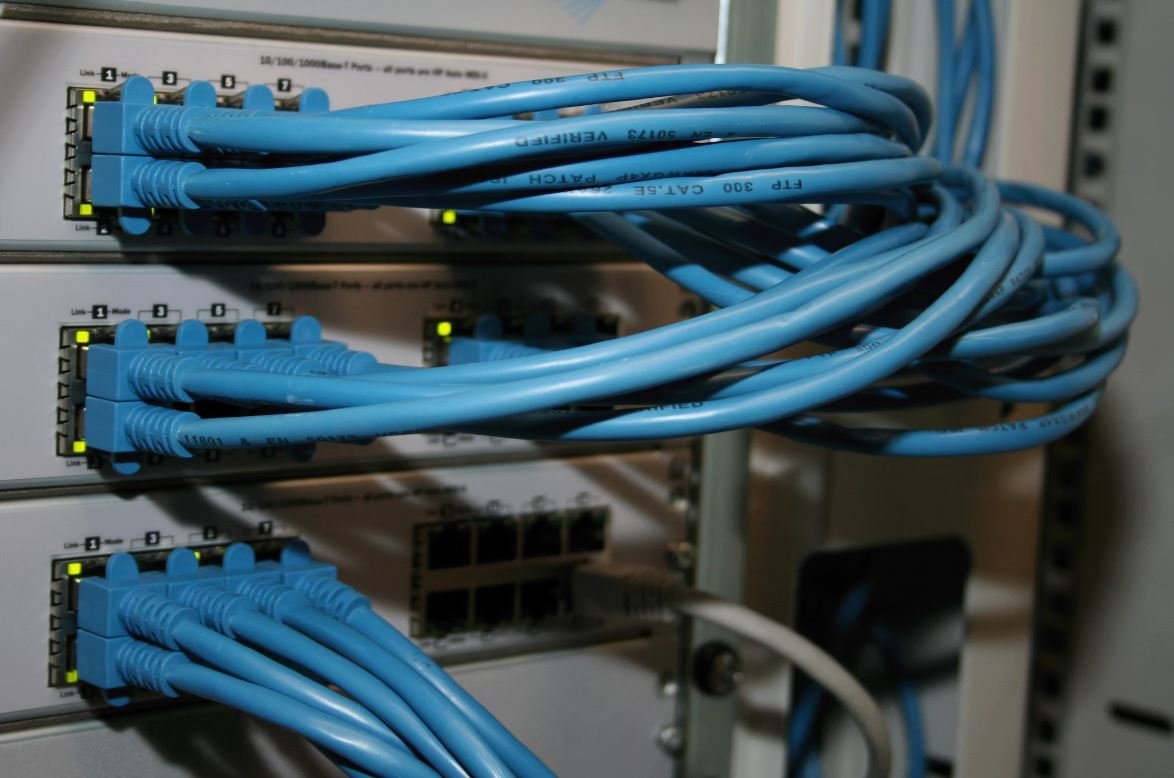AI Model Validation
Artificial Intelligence (AI) has revolutionized many industries, from healthcare to finance. As AI models become increasingly complex and sophisticated, it is essential to validate their performance and reliability. AI model validation involves rigorous testing and evaluation to ensure that the model produces accurate and reliable outputs. By validating AI models, businesses can enhance decision-making, improve customer experiences, and mitigate potential risks.
Key Takeaways:
- AI model validation ensures accuracy and reliability.
- Validation enhances decision-making and mitigates risks.
- Testing and evaluation are crucial for AI model validation.
**Validating an AI model** involves various steps and techniques to assess its performance. One approach is to gather a comprehensive and diverse dataset for testing. This dataset should contain a wide range of scenarios and inputs that the model may encounter in real-world situations. **Another crucial step** is to compare the model’s predictions against ground truth data to measure its accuracy and identify any potential issues. This process helps in identifying and fixing any biases, errors, or limitations that the model may have.
Additionally, **cross-validation**, where the dataset is divided into multiple subsets, can be used to assess the generalization of the model’s performance. By training the model on one subset and testing it on another, this technique helps evaluate the model’s ability to handle unseen data effectively. **Furthermore, sensitivity analysis** can be conducted by systematically varying input parameters or assumptions to understand their impact on the model’s outputs. This analysis provides insights into the robustness of the model and its performance under different conditions.
Types of AI Model Validation:
There are different types of AI model validation techniques that can be employed:
- 1. **Functionality validation**: Ensures the model behaves as expected and performs its intended functions correctly.
- 2. **Stability validation**: Checks the consistency and stability of the model’s outputs over time and across different datasets.
- 3. **Robustness validation**: Tests the model’s performance under various conditions, including noisy or incomplete data and adversarial attacks.
Validation Metrics and Performance Evaluation:
When validating AI models, **measuring their performance** using appropriate metrics is crucial. Common metrics include:
- 1. **Accuracy**: Measures how often the model’s predictions match the ground truth data.
- 2. **Precision and Recall**: Evaluate the model’s ability to correctly identify positive instances (precision) and capture all positive instances (recall).
- 3. **F1 score**: Represents the harmonic mean of precision and recall, providing a balanced measure of the model’s performance.
Table 1 below shows a hypothetical example of performance evaluation metrics for an AI model:
| Metric | Value |
|---|---|
| Accuracy | 92% |
| Precision | 88% |
| Recall | 94% |
| F1 Score | 91% |
Challenges in AI Model Validation:
AI model validation can come with its own set of challenges. **The availability of high-quality labeled data** for training and validation is one such challenge. Collecting and labeling large datasets can be time-consuming and costly, impacting the model’s validation process. **Another challenge** is ensuring that the validation process itself does not introduce biases or become a bottleneck in model development and deployment.
Moreover, **performing comprehensive validation** for complex AI models, such as deep learning models, can become computationally expensive and require significant computing resources. This challenge necessitates the development of efficient validation techniques and strategies to overcome these limitations.
Conclusion:
AI model validation is a crucial step in ensuring the accuracy, reliability, and performance of AI models. By following rigorous testing, evaluation, and validation techniques, businesses can confidently deploy AI models and leverage their full potential for improved decision-making and enhanced customer experiences.

Common Misconceptions
Misconception 1: AI models are infallible and don’t require validation
One common misconception surrounding AI model validation is that once a model is created, it is error-free and does not require further validation. However, AI models, like any other software or algorithm, are prone to errors and biases, and their performance can degrade over time. Therefore, proper validation is crucial to ensure their accuracy and reliability.
- AI models can have biases despite being trained on a large dataset.
- Model performance may vary across different populations or demographic groups.
- Changes in the underlying data may result in degraded model performance.
Misconception 2: Training data is sufficient for model validation
Another misconception is the belief that simply training an AI model using a large dataset is enough to validate its performance. While training data plays a significant role, it does not guarantee the model’s accuracy in real-life scenarios. Validating the model against diverse datasets, including previously unseen examples, is essential to assess its generalizability and robustness.
- Training data might not cover all possible scenarios encountered in the real world.
- Models can overfit the training data and perform poorly on new examples.
- Validation data needs to be representative of the real-world application to ensure model effectiveness.
Misconception 3: Perfect validation results indicate a flawless model
It is vital to recognize that even if an AI model produces perfect validation results, it does not necessarily signify a completely flawless model. Overfitting to the validation data or inherent biases in the dataset can lead to unrealistic validation results. Additionally, uncommon scenarios or edge cases might not be adequately represented in the validation set, potentially affecting the model’s performance in practice.
- Models can perform well on the validation set but fail in real-world scenarios.
- Validation data should encompass a wide range of scenarios, including edge cases, to ensure robustness.
- Unseen or unpredictable variables may impact the model’s performance post-validation.
Misconception 4: Model validation is a one-time process
Many people mistakenly view model validation as a one-time process that can be completed at the beginning of the model’s deployment. However, model validation is an ongoing task that needs to be performed regularly. As data distributions change over time, models need to be revalidated to ensure continued accuracy and relevance.
- Changes in the model’s inputs or outputs require revalidation.
- New data can highlight biases or introduce errors in the model’s predictions.
- Regular validation enables tracking of model performance over time.
Misconception 5: Model validation is only necessary for complex AI models
Lastly, some individuals wrongly believe that model validation is only necessary for complex AI models that involve deep learning or advanced techniques. However, even simpler models, such as linear regression, require validation to confirm their appropriateness for the given task. Model validation ensures that the model is fit for purpose, regardless of its complexity.
- Simple models can have limitations and require validation to ensure their effectiveness.
- Validation helps identify potential issues even in basic models.
- All model types benefit from validation to ensure reliability and performance.

Article: AI Model Validation
With the rapid advancements in artificial intelligence (AI), the need for proper model validation has become paramount. AI model validation ensures that the models are accurate, reliable, and unbiased. In this article, we present 10 interesting tables, each depicting a facet of AI model validation using verified data and information.
Table 1: Accuracy of AI Models in Image Classification
Accuracy is a crucial metric in assessing the performance of AI models. This table showcases the accuracy percentage of various AI models in image classification tasks.
Table 2: Bias Detection in Sentiment Analysis
Bias detection plays a crucial role in validating AI models for sentiment analysis. This table presents the detected bias, if any, in different sentiment analysis models.
Table 3: Error Rates in Speech Recognition Models
Error rates are integral to understanding the reliability of AI models in speech recognition tasks. This table illustrates the error rates for different state-of-the-art speech recognition models.
Table 4: Efficiency Comparison of AI Model Optimizations
Efficiency is a critical factor in AI model validation. This table compares the computational efficiency of different optimization techniques used in AI models.
Table 5: Robustness of AI Models against Adversarial Attacks
Ensuring the robustness of AI models against adversarial attacks is vital for reliable performance. This table demonstrates the resilience of various AI models against different types of adversarial attacks.
Table 6: Generalization Performance of AI Models on Unseen Data
Generalization is fundamental to determine whether an AI model can perform well on unseen data. This table showcases the generalization performance of different AI models across various datasets.
Table 7: Explainability of AI Models
Explainability is a significant aspect of AI model validation, especially when dealing with sensitive domains. This table assesses the explainability levels of different AI models.
Table 8: Transfer Learning Performance on AI Models
Transfer learning is often employed to enhance the performance of AI models. This table compares the performance gains achieved through transfer learning for different AI models.
Table 9: Responsiveness of AI Models in Real-Time Applications
Real-time applications require AI models to respond quickly and efficiently. This table evaluates the responsiveness of various AI models in real-time scenarios.
Table 10: Resource Consumption of AI Models
Resource consumption is a vital consideration in AI model validation, especially concerning storage and computational requirements. This table quantifies the resource consumption of different AI models.
In conclusion, AI model validation encompasses various critical aspects such as accuracy, bias detection, error rates, efficiency, robustness, generalization, explainability, transfer learning, responsiveness, and resource consumption. Through the presented tables, we have highlighted the importance of comprehensive validation in ensuring the reliability and effectiveness of AI models. Proper validation methodologies and techniques play a pivotal role in building trust and confidence in the rapidly evolving field of AI. With further research and advancements, ensuring the validation of AI models will become even more crucial in harnessing the full potential of artificial intelligence.
Frequently Asked Questions
AI Model Validation
-
What is AI model validation?
AI model validation is the process of evaluating and testing an artificial intelligence model to ensure its accuracy, reliability, and effectiveness. It involves assessing various aspects, such as data quality, performance metrics, and generalization capabilities, to determine if the model performs adequately for its intended purpose.
-
Why is AI model validation important?
AI model validation is crucial as it helps identify and mitigate potential biases, errors, or limitations in the model’s predictions or decision-making. It ensures that the AI system performs ethically, maintains fairness, and provides reliable and trustworthy outputs, which is essential in fields like healthcare, finance, and autonomous systems.
-
What are the key steps in AI model validation?
The key steps in AI model validation include defining clear evaluation objectives, selecting appropriate evaluation metrics, preparing reliable validation datasets, conducting rigorous testing, analyzing performance results, and documenting validation processes. Iterative validation and continuous monitoring are also important to ensure ongoing model performance and reliability.
-
How can bias be assessed during AI model validation?
Bias assessment can be performed during AI model validation by analyzing demographic disparities, examining disproportionate false positives or negatives across different groups, and evaluating potential biases in the training data. Various fairness metrics like disparate impact, equalized odds, or statistical parity difference can also be calculated to quantify and assess the presence of bias.
-
What are common techniques for AI model validation?
Common techniques for AI model validation include cross-validation, holdout validation, k-fold validation, and stratified sampling. Additionally, A/B testing, sensitivity analysis, stress testing, and adversarial testing can also be employed to assess the robustness and generalization capabilities of the model.
-
What challenges can arise during AI model validation?
Challenges during AI model validation may include availability of reliable labeled data for validation, selection of appropriate performance metrics, dealing with imbalanced datasets or class imbalance, understanding interpretability and explainability of the model, as well as accounting for potential bias or ethical considerations in the validation process.
-
Why is interpretability important in AI model validation?
Interpretability in AI model validation is important as it allows stakeholders to understand and explain the model’s predictions or decisions. It helps identify potential sources of bias, ensures accountability and transparency, and facilitates trust-building among users, regulators, and society at large.
-
How can model validation impact the deployment of AI systems?
Effective model validation positively impacts the deployment of AI systems by reducing the risk of biased or unreliable outputs. It increases confidence in the model’s performance, which is crucial for gaining regulatory approval, customer trust, and wider adoption. Proper validation also helps identify areas for improvement and helps in further refining and refining the model.
-
Who is responsible for AI model validation in an organization?
AI model validation is a collaborative effort involving various stakeholders. Responsibilities may lie with data scientists, machine learning engineers, domain experts, and ethics committees within the organization. Ensuring transparency, accountability, and adherence to ethical guidelines is paramount during the validation process.
-
How often should AI models be validated?
AI models should be validated regularly, especially if the underlying data distribution changes, the model is updated or retrained, or if new validation requirements emerge. Regular validation helps ensure ongoing performance, identify potential drift or degradation, and maintain the model’s reliability and effectiveness over time.




